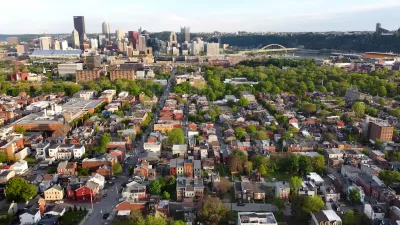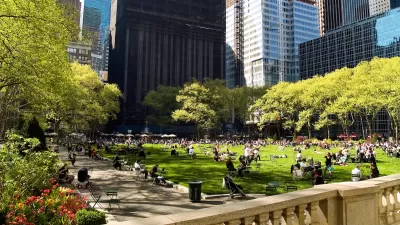Of all the sub-topics in urban planning and design, the ones likely to generate the most anxiety are those where land use planning intersects with economic development. Ben Brown ruminates.
"Let’s stop thinking of community livability and equitable opportunities as conditioned on cobbling together a 21st century-style economy that was already on its way out in the latter part of the 20th century. And let’s stop giving old-school business groups and economic developers veto power over urban planning strategies likely to provide way more resilient environments for an era in which economic uncertainty is anything but uncertain.
"Fortunately what Smart Growth and New Urbanist planners and designers already know — and what new era entrepreneurial types like those reworking the physical environment of the RTP are putting into practice — goes a long way toward making better places to tolerate failed enterprises.
"The push in most communities is to use some combination of subsidies, incentives and regulatory bullying to muscle businesses into picking up most of the tab for closing community livability gaps. Why not attack problems more directly by using available tools of government — particularly land use and transportation planning — to make it easier for citizens to survive low-wage economies and, not incidentally, to better position them to be around to help invent whatever comes next?
"Planning that delivers the broadest possible choices and scales of places to live, do business and get around without relying exclusively on private automobiles is the kind of planning that stretches family budgets. We know that. But it’s only part of the story. The best research and the most successful entrepreneurs in this new era suggest that despite the propensity for serial failure baked into the start-up culture, environments that allow for continuous, casual connectivity between people and ideas are precisely the ones most likely to nurture firms that survive and thrive and employ lots of people."
FULL STORY: Making Better Places to Fail: Take those jobs and . . (Part II)

Study: Maui’s Plan to Convert Vacation Rentals to Long-Term Housing Could Cause Nearly $1 Billion Economic Loss
The plan would reduce visitor accommodation by 25,% resulting in 1,900 jobs lost.

North Texas Transit Leaders Tout Benefits of TOD for Growing Region
At a summit focused on transit-oriented development, policymakers discussed how North Texas’ expanded light rail system can serve as a tool for economic growth.

Why Should We Subsidize Public Transportation?
Many public transit agencies face financial stress due to rising costs, declining fare revenue, and declining subsidies. Transit advocates must provide a strong business case for increasing public transit funding.

How Community Science Connects People, Parks, and Biodiversity
Community science engages people of all backgrounds in documenting local biodiversity, strengthening connections to nature, and contributing to global efforts like the City Nature Challenge to build a more inclusive and resilient future.

Alabama: Trump Terminates Settlements for Black Communities Harmed By Raw Sewage
Trump deemed the landmark civil rights agreement “illegal DEI and environmental justice policy.”

Dear Tesla Driver: “It’s not You, It’s Him.”
Amidst a booming bumper sticker industry, one writer offers solace to those asking, “Does this car make me look fascist?”
Urban Design for Planners 1: Software Tools
This six-course series explores essential urban design concepts using open source software and equips planners with the tools they need to participate fully in the urban design process.
Planning for Universal Design
Learn the tools for implementing Universal Design in planning regulations.
City of Santa Clarita
Ascent Environmental
Institute for Housing and Urban Development Studies (IHS)
City of Grandview
Harvard GSD Executive Education
Toledo-Lucas County Plan Commissions
Salt Lake City
NYU Wagner Graduate School of Public Service





























